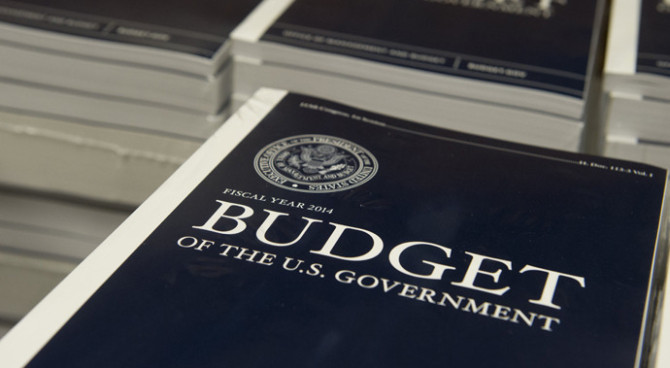The U.S. and Europe are lowering capital standards for ‘investments’ in public infrastructure—ignoring the lessons from 2007-08.
With infrastructure spending so popular and government coffers so empty, the appeal of subverting private wealth to serve government objectives has become even more attractive. The latest scheme to do so is the European Union’s attempt to “incentivize” more insurance investment in public infrastructure as part of its “Solvency II” regulatory regime. In January the EU lowered capital standards for infrastructure investments by as much as 40% but cited no major errors in the old risk model or any new empirical evidence to justify the change. Instead, the EU repeatedly emphasized its need for “€2 trillion in [infrastructure] investment” by 2020.
The U.S. seems set to follow Europe’s lead. The Treasury Department’s new Federal Insurance Office released a report last year encouraging “state insurance regulators to assess the current [risk-based capital] approach and explore appropriate ways to increase incentives for infrastructure investments by insurers.”
Haven’t we seen this movie before? Didn’t lowering capital standards in the mortgage industry have a bad ending? Remember the subprime-mortgage meltdown and the 2007-08 financial crisis?
The most infamous modern effort to make private wealth serve government goals began on Sept. 12, 1992, when candidate Bill Clinton called for private pension funds to “invest” in government priorities, such as affordable housing and infrastructure. As President Clinton’s point man on harnessing private wealth for public use, then-Labor Secretary Robert Reich drooled over the sheer size of private-pension wealth. “In all, America’s pension funds hold assets that total $4.6 trillion,” he said in 1994 congressional testimony. “If $4.6 trillion worth of one-dollar bills were laid end-to-end, they would stretch a distance equal to 907 round-trip journeys from Washington, D.C., to the moon.”
In a 1994 letter to this newspaper, Mr. Reich promised “competitive, risk-adjusted rates of return” for pensions “plus ancillary benefits, such as affordable housing, infrastructure improvements and jobs.” Yet even the unions, the Clinton administration’s most reliable allies, flatly rejected sacrificing their life savings for government goals.
Despite losing the battle to raid pensions to fund affordable housing, the Clinton administration won the war by using Housing and Urban Development quotas and the little-known Community Reinvestment Act (CRA) to force Fannie Mae and Freddie Mac and banks to serve government goals. HUD housing quotas ultimately required that 55% of all loans purchased by Fannie and Freddie had to be subprime-type loans. President Clinton’s financial regulators used the CRA to force banks to make subprime loans.
As former Federal Reserve Chairman Alan Greenspan said in 2008 congressional testimony, the “early stages of the subprime market . . . essentially emerged out of the CRA.” By the time the crisis broke, federal regulators had used the CRA and HUD quotas to destroy mortgage-credit standards and fill the financial system with 31 million subprime-type mortgages. No less than 76% of those mortgages were issued, held or guaranteed by the federal government.
The EU and the U.S. seem determined to repeat this sad history, only this time lowering capital standards and providing “incentives” for insurers to invest in roads, railways, airports and bridges. If U.S. insurers push back, it isn’t hard to imagine a future Treasury secretary questioning their “economic patriotism” and pressuring them to fund infrastructure. Thanks to the 2010 Dodd-Frank financial law, the Treasury Department already claims power over 30% of the insurance industry. This authority will expand as the Treasury and Federal Reserve work with international regulators to impose the G-7 Financial Stability Board’s international capital standards on U.S. insurers.
Those who question the threat faced by insurance policyholders need only remember that imposing Community Reinvestment Act on the insurance and securities industries was the greatest unfulfilled demand by Democrats in the debate on the 1999 Gramm-Leach-Bliley Act. Had they succeeded, the misery caused by the subprime crisis would have been even deeper and more widespread.
The European Commission’s impressment of the insurance industry to fund infrastructure sounds like predatory behavior. Last year the commission said that “if insurers were to increase their investment in infrastructure to even 0.5% of total assets, which seems achievable, this would mean an extra €20 billion of [infrastructure] investment.” The commission speaks as if it had found a pirate’s treasure map, and piracy seems what they have in mind.
Wealth cannot serve two masters. Individuals buy insurance to promote the well-being of their families. Pressuring or “incentivizing” insurance companies to do anything other than to protect policyholders steals wealth from its rightful owners. Now regulators want to gamble the insurance policy you purchased to protect your loved ones on the profitability of projects like the California High-Speed Rail Authority. We already know how this story ends.
Mr. Gramm, a former chairman of the Senate Banking Committee, is a visiting scholar at the American Enterprise Institute.
Appeared in the October 3, 2016, print edition.



